- Home
- Commercial Hydroponic Farms
- 60 Tower Hydroponic Farming System
60 Tower Hydroponic Farming System
Description
Mr. Stacky is a revolution in urban farming. Low Infrastructure Cost | Incredible Yield Per/Sqm | Space Saving | Modular | Scalable | Energy Efficient | Water Efficient | Simple to Use | Off Grid Capable | Hydroponic or Organic Nutrient | Commercial Quality Yield
Choose between the ‘simple’ or ‘advanced’ fittings packages + add on’s including greenhouses, outdoor netting solutions, in-line EC monitorring systems etc. Mr Stacky are experts in Hydroponic Tower Farming and can get you growing quickly with fast delivery from Gold Coast, QLD
Rough Business Case (Strawberry Farm):
Upfront costs – $9000 + labour
Production – 2400 to 4800 kg strawberries p/year (40-80kg p/tower)
Revenue – $48,000 to $96,000 year 1 (Selling retail at $18 p/kg)
Ongoings – $6000 + labour p/year (eg. Water, nutrient, growing medium)
Profit Y1 – $32,000 – $80,000 
Description


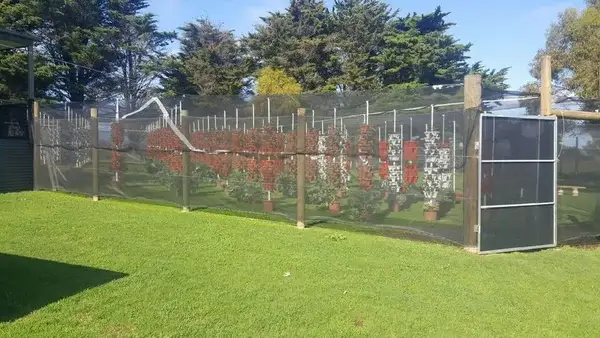
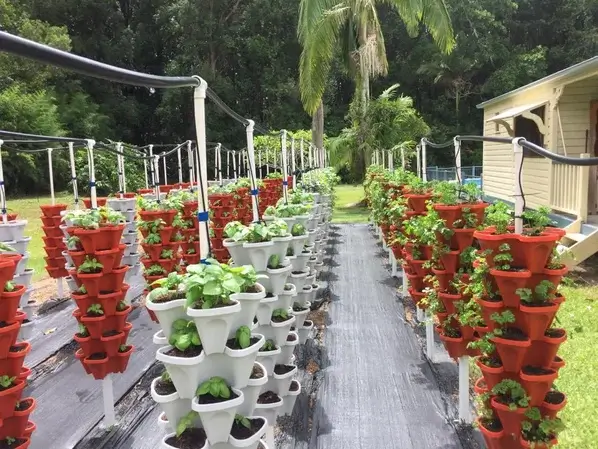
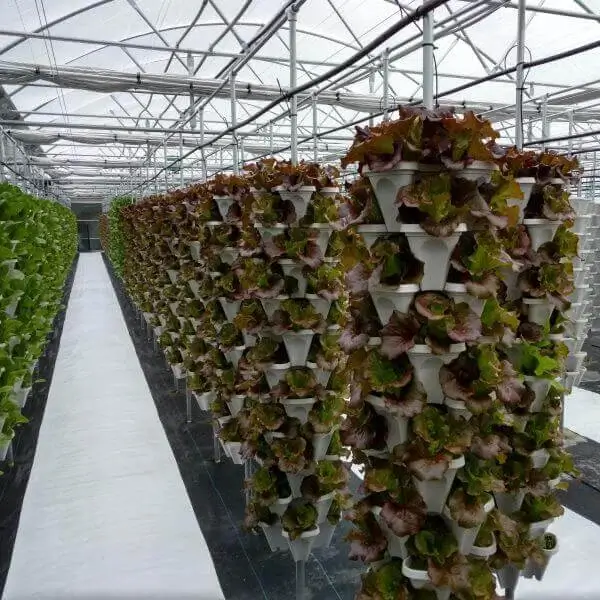
Why Choose a Tower Farm?
Amazing Value
Start up cost @ $118 p/tower with 28 plant sites p/sqm! Easily scale up to 60 plant sites p/sqm (Ask us how).
Amazing results
Expect robust, healty, prolific growth & commercial quality produce. See below video for what crops grow best in tower farms.
Smart Technology capable
Choose the 'commercial fittings' option above for Wifi controlled irrigation from your phone. In-line EC/PH/Temp metering solutions also available etc.
Outdoor or Greenhouse
The Coco/perlite medium is an effective buffer against temperature variance enabling successful growth in various climates. See our outdoor overhead netting solutions or greenhouse & poly tunnel packages
Water Efficient
Tower farms can use up to 98% less water than traditional farming methods. Every drop of water is delivered directly where it is needed.
Hydroponic or Organic Nutrients
With hydroponic fertigation we inject nutrient into the water flow. With Organic, we add pelletized nutrient to the medium then add normal water.
Energy Efficient & Off Grid capable
Each tower requires only a small flush of water 3 times p/day. Compare that to aeroponics or NFT where constant recirculation is needed and the energy saving is massive! Solar options also available.
Quality Service
Dedicated Australian office with phone support and expert assistance. Detailed installation instructions included or we can set-up the whole farm for you.
Best Crops for Tower Farms
General Info
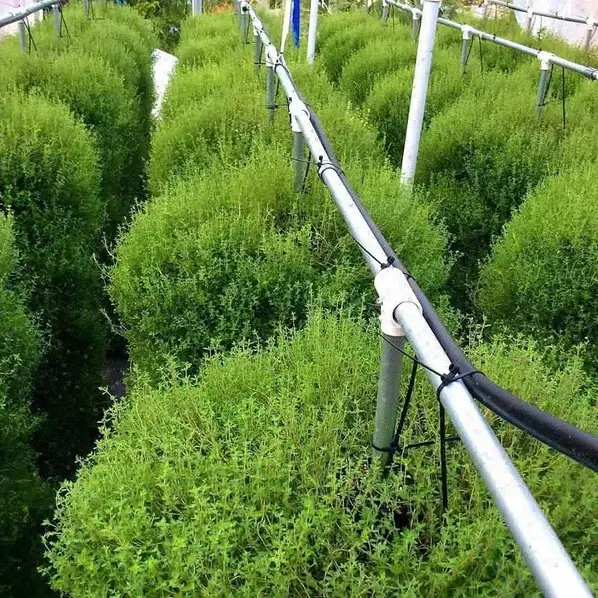
A Conservative Business Case
60 Tower Parsely, Basil, Coriander, Mint Farm
- 60 meter area (6 x 10)
- 4 plant sites p/stack, 7 stacks p/tower = 1680 total plant sites
- 2 bunches p/plant site p/month = 3360 bunches
- 3360 bunches @$1.50 p/bunch = $5,040 gross sales p/month
- $5,050 p/month x 12 = $60,480 p/year
- Upfront investment $9000
- On-going costs approx $5000 p/year (nutrient + water + coco coir + packaging)
- Net income year 1 $46000+
Note: Yield increases exponentially as you stack higher!

Commercial Farming FAQ
We recommend min 1 to 1.2 meters apart to ensure adequate sun to all sections of the farm.
This is an excellent method to increase sunlight to the lower parts of the tower. In fact out latest recommended design for commercial set-ups is 3 meter poles that are secured overhead with simple wiring. Then a planter at the base of the tower, then first tier 500mm above the ground, then 5 medium stacks, then 25mm spacer, than 5 medium stacks. See this picture for an example
- Commercial quality yields (vertical growing methods)
- No waste product or flushing of system required
- Low operational costs
- Plant constantly receives fresh nutrient instead of reconstituted/depleted nutrient
- Easier to maintain a consistent PH level
- Nutrient water is less prone to pathogen attack
- Significantly less logistical and maintenance issues compared to re-circulation
- Effective insulation of roots from extreme heat (using coco/perlite medium)
- Strong buffers against any prolonged moisture loss
- Almost no electricity usage as there is no water pump required
- Highly cost effective with reusable medium
This depends on a range of factors including sunlight, temperture, plant types and phases etc, but as a rule, we recommend budgeting for 1 litre per tower per day.
Vertical farming with hydroponic technologies are expanding rapidly all across the world due to increased urban farming demands and production needs.
Most hydroponic facilties carry a substantial infrastructure outlay with the need for greenhousing, water re-circulate, water, temperature and pest management, reservoirs, pumping etc etc.
The infrastructure cost of a Mr Stacky tower farm are significantly less other systems with arguably an even better yield per square meter. With our latest farming methods, we have simple and scalable solutions for pest management, crop rotation, sunlight optimization, wind management and even an innovative per tower mini greenhouse solutions.
With a recirculating farm (eg. NFT), you run the risk of water born diseases being carried through to the entire farm. Our tower farms use a fertigation method which ensures fresh clean nutrient every feed with almost no water management overheads or expensive monitorring systems.
Our injectors are high quality with 1 year warranty and come with replacement parts to maintain optimal useage over time. They are used in commercial fertigation set-ups all over the world. They work like a venturi. As water is pushed through (from water pressure), a suction action is created inside the device, which extracts liquid fertilizer from a reservoir below and injects this into the flow of water which goes out to the garden. It is adjustable so you can varry the output from 0.4% – 4.0%
Fertilizer Injector FAQ's
No, it’s actually very easy. Just install it against a wall between the garden and your water mains or water tank. The hardest bit is ensuring the right EC to your garden. We show you exactly how to do this. See this video
These devices have been used in large scale agriculture & farming practices for decades. They are powered by water pressure. As water enters through the inlet, it drives an internal suction action just like a toilet plunger. This creates a vaccuum within the device which draws nutrient upwards from a tank below and injects this into the water flow at quantities between 0.4% to 4% of the total flow.
- No electricity needed
- No pumps needed (if using water mains)
- No reservoirs needed
- Injects fresh nutrient every feed
- No recirculation needed
- Long lasting, commercial quality
- Allows precise nutrient measurement
- Automated & easy to maintain
This set-up is best used for larger scale operations which are cycling through more than 100 litres of water per week. It means you spend less time managing your reservoir. Because they rely on water pressure, they’re much more scalable then a water pump. 2 injectors are sufficient to power an entire 100 tower farm. (Part A & Part B nutrient)
They come with a 1 year warranty on malfunction or parts replacement. They also come with replacement seals which can be used after 1 year or so to extend the life of the device well past 2-5 years.
Basically, this is a high quality venturi. You can pickup small venturi devices for $20 but in our experience they don’t work! It’s very hard to regulate the amount of suction and you end up wasting heaps of nutrient. Also, the venturi’s we’ve tested are very tepremental. It might work ok for a day, and then it stops sucking properly and your constantly second guessing if it’s working! These injectors are made for commericial growers who need consistency and longevitiy. Yes, the cost more, but they’re worth it.
Typically, the main issue is build up of mineral salt in the 6mm hose which extends into your nutrient solution. This can be easily resolved cleaning the hose fortnightly with a wire or simply running clean water through it.
For commercial farms, we recommend 2 x injectors. 1 for Part A & 1 for Part B. However for smaller residential set-ups, simply use 1 injector and combing the Part A & B nutrient in one reservoir at an EC of 15. This ensures no significant nutrient ‘lock-out’ or detrimental results. See these results. (All based on 1 injector and combined Part A &B at EC15)
Hydroponic Nutrient FAQ's
There is much conjecture about the nature of hydroponic nutrients and their safety in comparison to ‘natural’ or ‘organic’ soil. See this article for detailed info.
The artical concludes that:
a) Hydroponic nutrients are derived from the same base materials that conventional soil based nutrients are made
b) There is no evidence to support that plants grown with hydroponic mineral salts are detrimental to human health in any way. This evidence is based on multi-decades of analysis and use worldwide.
All plants need fertilizer to grow. In traditional gardening plants receive nutrient from the soil which is enriched with minerals and organic additives which may include manure & compost. These soil additives can be very effective, but as with many ‘organic’ products, there is the potential for large disparity in the actual contents.
Nutients can be categorized as follows:
1) Macronutrients. Plants need these in large amounts. This includes: Hydrogen, Carbon, Nitrogen, Oyxgen, Phosphorus, Calcium.
2) Micronutrinets. Plats need these in small amounts>
This includes: Zinc, copper, iron, manganese, boron, cholorine, nickel, molybdenum, nickel.
Standard hydroponic nutrients are derived from mineral salts. Hydroponic nutrients are simply plant nutrients that are designed for use in a hydroponic system. Plants require 16 elements to grow. Carbon, Hydrogen, Oxygen, and Nitrogen are already available in the air and water that they are receiving.

Mr Stacky Australia
Varsity Lakes, QLD 4227
ABN 802 266 459 01
Additional information
| Pot Size | Large (45cm width), Medium (33cm width) |
|---|---|
| Farm Kit Inclusions | Advanced (commercial fittings), Planters Only, Simple (residential fittings) |



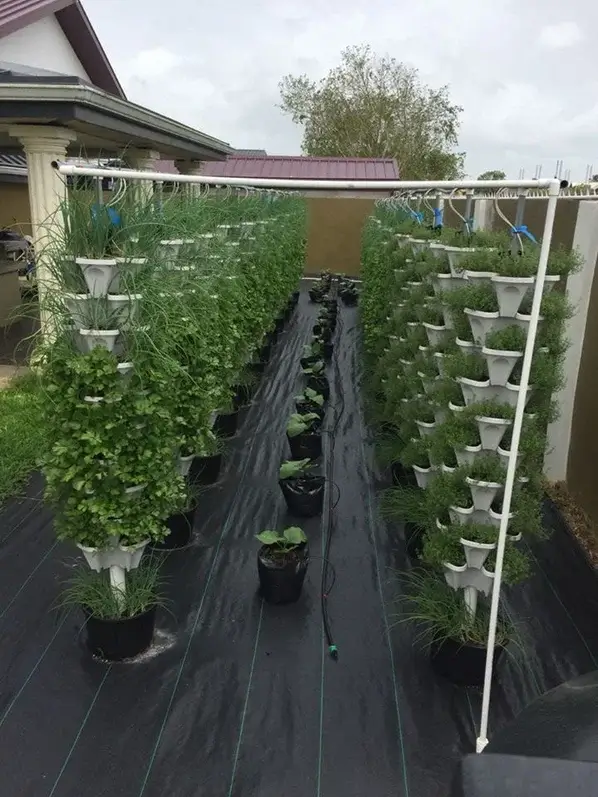
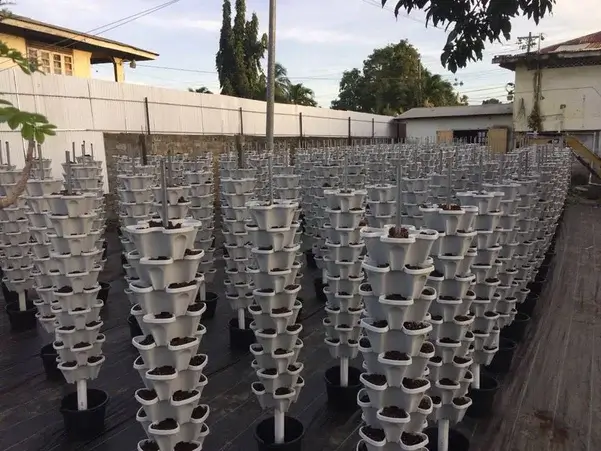


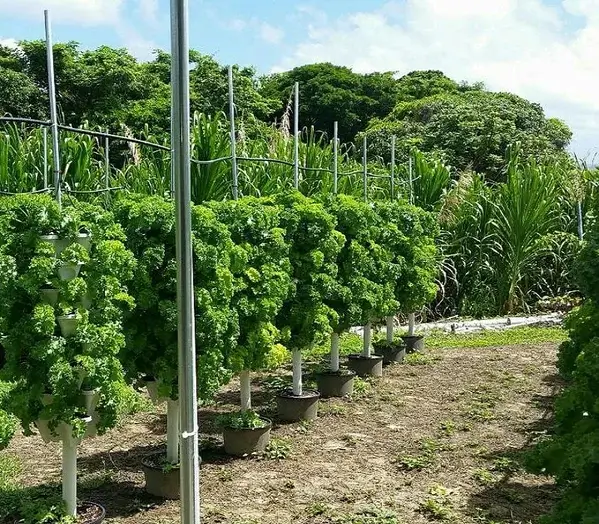


The plants go ballistic. No issues with growing. We had mould issues growing Basil, so switched to Parsely, Mint, Coriander only. Most of the work is in the harvesting/packaging and we have help from local friends and family. We enjoy being outdoors. We learned quickly not to use cheap weed matting. Make sure you get matting with strong UV resistance. Also, we later added planters at the base of each tower to increase yield and decrease run-off as the ground was getting soggy after rain. Very happy with the system. thanks.